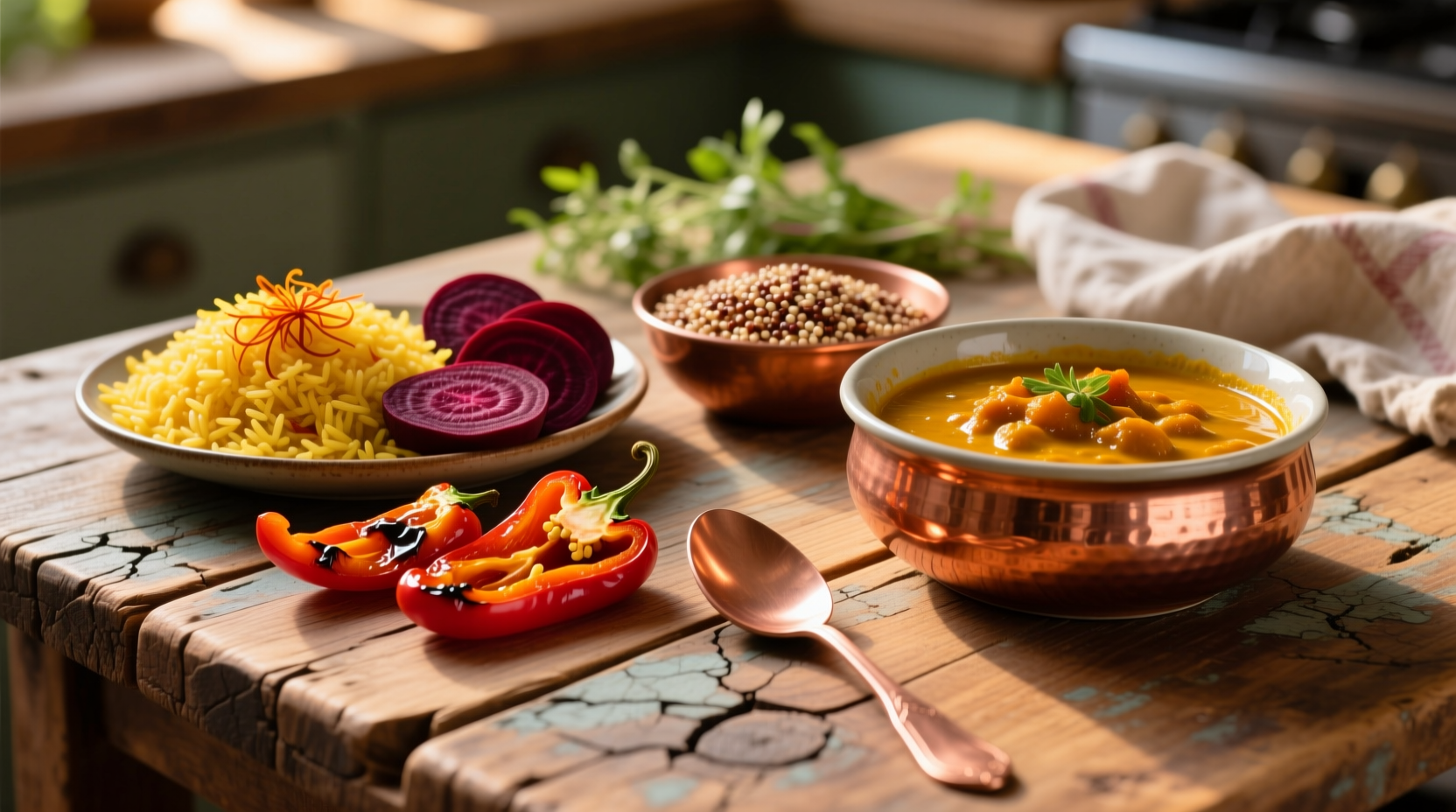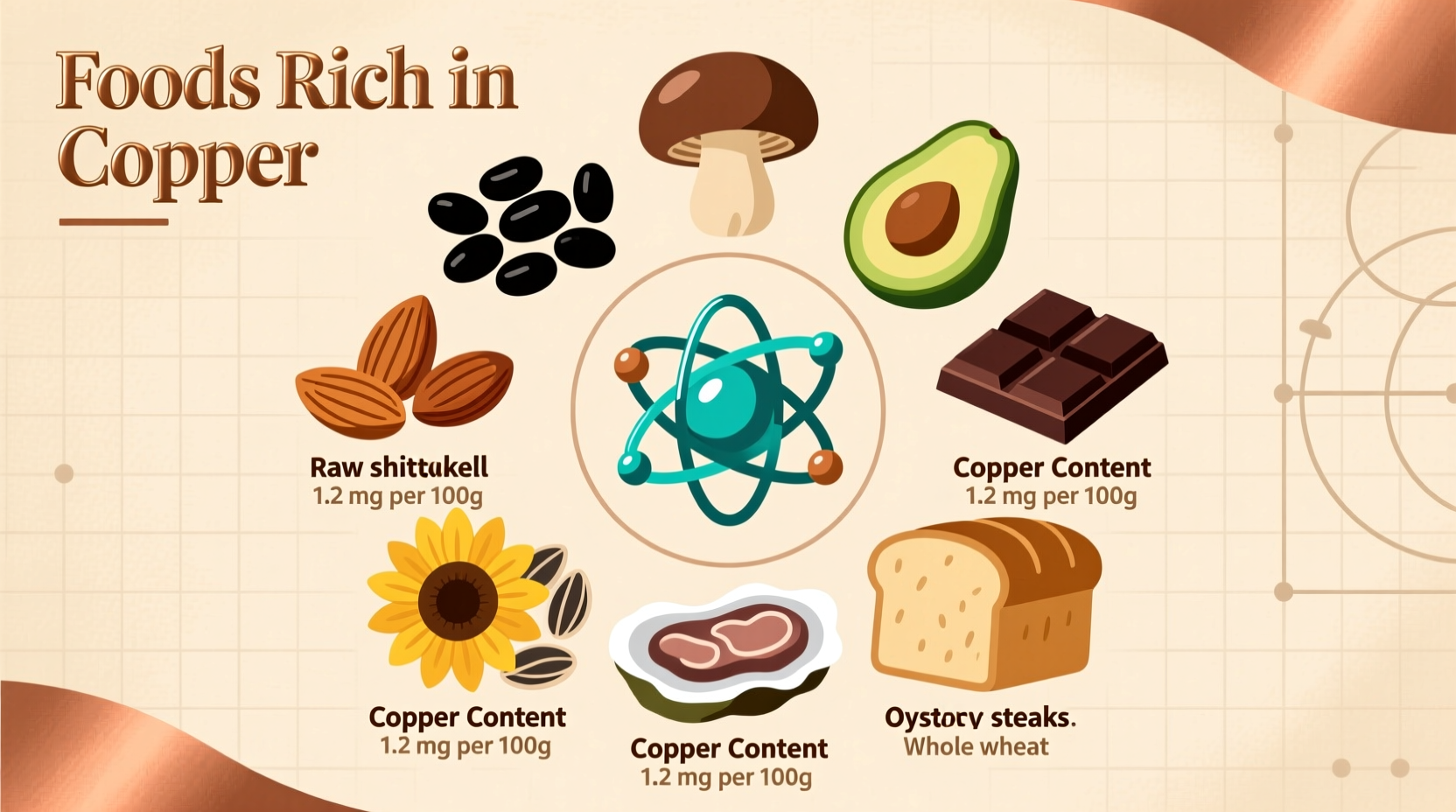Understanding which foods contain copper is essential for maintaining optimal health. This trace mineral plays a critical role in energy production, iron metabolism, and nervous system function. Without adequate copper intake, you risk deficiency that can lead to fatigue, weakened immunity, and even neurological issues. Let's explore the best dietary sources of copper and how to incorporate them into your daily meals for maximum health benefits.
Why Copper Matters for Your Health
Copper works behind the scenes as a cofactor for numerous enzymes that keep your body functioning properly. According to the National Institutes of Health, copper helps with:
- Formation of red blood cells and iron absorption
- Maintenance of healthy bones and connective tissue
- Proper functioning of the nervous system
- Antioxidant defense against free radicals
- Production of melanin (skin pigment)
Unlike some nutrients, your body doesn't produce copper naturally—you must get it through your diet. The recommended daily allowance (RDA) for adults is 900 micrograms, with slightly higher needs during pregnancy and lactation.
Top Copper-Rich Foods by Category
Knowing which foods contain copper helps you make informed dietary choices. Here's a breakdown of copper content in common foods, organized by category for practical meal planning.
Organ Meats: The Copper Powerhouse
Organ meats, particularly liver, contain exceptionally high copper levels. Just 3 ounces of beef liver provides a staggering 14,000 micrograms of copper—more than 1,500% of your daily needs. While this makes liver an excellent source, moderation is key to avoid excessive intake.
Seafood: Ocean's Copper Treasure
| Seafood | Copper (mcg per 3oz) | % Daily Value |
|---|---|---|
| Oysters, cooked | 6,000 | 670% |
| Lobster, cooked | 1,000 | 110% |
| Crab, cooked | 700 | 78% |
| Tuna, canned | 200 | 22% |
Seafood lovers rejoice—oysters stand out as nature's most concentrated copper source. The USDA FoodData Central database confirms that shellfish consistently ranks among the top copper sources in the American diet.
Nuts and Seeds: Convenient Copper Boosters
For plant-based copper sources, nuts and seeds offer convenient options that fit easily into daily routines:
- Cashews: 1 ounce (about 18 nuts) contains 280 mcg (31% DV)
- Sunflower seeds: 1 ounce provides 250 mcg (28% DV)
- Sesame seeds: 1 tablespoon delivers 150 mcg (17% DV)
- Almonds: 1 ounce offers 120 mcg (13% DV)

Legumes: Budget-Friendly Copper Sources
Beans, lentils, and chickpeas provide copper along with protein and fiber. One cup of cooked lentils contains approximately 500 mcg of copper (56% DV), making them an excellent choice for vegetarians and budget-conscious eaters. Black beans and chickpeas also deliver substantial copper content at about 400 mcg per cup.
Whole Grains and Fruits
While not as concentrated as other sources, whole grains contribute meaningfully to copper intake:
- Quinoa: 1 cup cooked = 180 mcg (20% DV)
- Wheat bran: 1/4 cup = 150 mcg (17% DV)
- Avocado: 1 medium = 400 mcg (44% DV)
- Dried apricots: 1/2 cup = 200 mcg (22% DV)
How Much Copper Do You Really Need?
Daily copper requirements vary by age and life stage. The National Academy of Medicine established these adequate intake levels:
- Adults (19+ years): 900 mcg daily
- Pregnant women: 1,000 mcg daily
- Lactating women: 1,300 mcg daily
- Children (9-13 years): 700 mcg daily
Most people meet their copper needs through a balanced diet. However, certain conditions like celiac disease, gastric bypass surgery, or excessive zinc supplementation can interfere with copper absorption.
Maximizing Copper Absorption from Food
Not all dietary copper gets absorbed equally. Your body typically absorbs 50-75% of copper from food sources, but several factors influence this:
- Vitamin C enhances absorption—pair copper-rich foods with citrus fruits or bell peppers
- Excess zinc inhibits absorption—maintain proper zinc-to-copper ratio (aim for 8-11mg zinc to 900mcg copper)
- Animal-based sources have higher bioavailability than plant sources
- Avoid taking copper supplements with calcium-rich foods as calcium competes for absorption
Recognizing Copper Deficiency Symptoms
Copper deficiency often develops gradually and may manifest as:
- Persistent fatigue despite adequate sleep
- Frequent infections due to weakened immunity
- Pale skin and premature graying of hair
- Numbness or tingling in extremities
- Bone fractures from weakened skeletal structure
According to research published in the American Journal of Clinical Nutrition, copper deficiency remains underdiagnosed because symptoms overlap with other conditions. If you suspect deficiency, consult a healthcare provider for proper testing rather than self-supplementing.
Practical Ways to Increase Copper in Your Diet
Boosting your copper intake doesn't require drastic dietary changes. Try these simple strategies:
- Add a small handful of cashews to your morning oatmeal
- Include lentils in weekly meal prep for soups and salads
- Snack on dark chocolate (70%+ cocoa) which provides copper plus antioxidants
- Use sunflower seeds as salad toppers instead of croutons
- Prepare seafood dishes at least twice weekly
Remember that copper works synergistically with other nutrients. Pairing copper-rich foods with vitamin C sources enhances absorption, while excessive zinc intake (common in supplements) can create imbalance.











 浙公网安备
33010002000092号
浙公网安备
33010002000092号 浙B2-20120091-4
浙B2-20120091-4